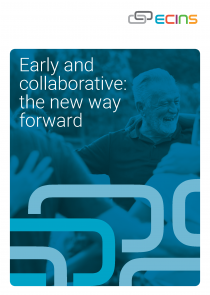Adam Pearce, who is part of an ASB and Licensing Team in Fenland, Cambridgeshire is responsible for running the biggest case currently on ECINS managing Street Drinkers. Adam spoke to ECINS’ Heather Ette about how the new ECINS Mapping Tool is improving police work across the district.
HE: How did your involvement with ECINS begin?
AP: The use of ECINS in Cambridgeshire has grown tremendously since it began as an ASB pilot 3 years ago. It is now operational in ASB, Licensing, IOM, Street Drinkers, Multi-Agency Operations, Rough Sleepers, Management of HMOs and the Cambridgeshire Together for Families (Troubled Families Programme). In Fenland we started using ECINS to manage Street Drinkers in April 2012, mainly for Wisbech DPPO, in order to restrict people drinking on the street.
HE: How do you use ECINS to manage Street Drinkers?
AP: ECINS is used to record all seizures of alcohol and instances where Section 27 notices have been served. Recording the data in this way gives us the evidence to then arrest perpetrators who go on to breach the notices. We also use this information as evidence when we apply for any ASBO’S.
HE: How has ECINS helped your work?
AP: Before we had ECINS we recorded data on a Lotus Notes database which was cumbersome, also in the past all the systems we used were for police use only which meant the information we recorded was effectively only useful for us. We have found ECINS much easier to use and the added benefit is that we can now share the information we record with our partners.
HE: Which partners have you managed to get on board with ECINS?
AP: We are now sharing our information regularly via ECINS with Drink Sense, Probation and the local district Council. Probation asks to view our reports and Immigration also get to see reports with persistent offenders.
HE: Has the new mapping functionality made much impact to your work?
AP: It has helped us a lot with evidencing problem areas which is especially useful in the Licensing Application decision-making process. The mapping facility can be printed off when we get a Licensing Application and we can use it to show any issues. For example, any premises looking for a license in an area have to prove they will not add to current problems (in a Community Impact area). If we make a representation against a new licence we can use the mapping as evidence to show how problems can be escalated through the new licence.
HE: Have you experienced any other benefits of the mapping facility?
AP: Mapping is also helping us in relation to neighbourhood issues. When an offence takes place, the practitioner logs the incident on the ECINS Location Tab to show the area where the offence or incident took place. You can input the home address of the suspect/offender and separately input the area where they committed the offence. This helps us because an individual cannot be prohibited from where they live but because we can map an area by street name we can prohibit them from entering other areas they frequent.
HE: If you could sum it up in a sentence, what would you say are the main benefits of ECINS for you?
AP: ECINS has been live in the Fens for many years now and as a direct result of using the system partnership working has improved.


